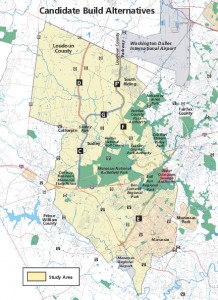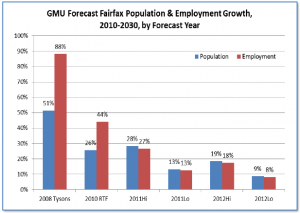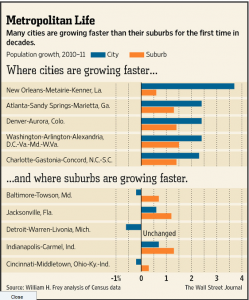By Peter Galuszka
An early summer calm has settled on the “The Lawn” at the University of Virginia following 16 days of pointless controversy that damaged the school’s reputation and raised serious questions about how Mr. Jefferson’s school should be run.
The most important issues wafting up from the now-quiet battleground are not really whether there is an “existential threat” to the school or if the “incremental” approach to dealing with its problems is the best way.
Issues surrounding online education that have been around for years do not really raise the specter of the great school being swept away in a tsunami of technological changes. Budget problems remain, but the real issue is why the General Assembly spends so little and gets so much rather than the opposite at least when you look at how other public school systems in North Carolina and Maryland do it. Despite what you read on this blog, cheap-o Virginia does get a lot for its little money.
The critical point is who these boards of visitors are, where they come from, what is their experience and how the get chosen. Being Virginia, there is a natural and tendency to assume that only people with business backgrounds and who have money have the right and the brains to be on boards. Women and men of science, the arts, education and public service need not apply. It could be that they don’t pump as much money into political campaigns.
Here are a few guidelines:
Buying Your Way on the Board
As at any university, Virginia’s public schools have independent oversight in the form of boards of visitors appointed by governors. The system results on boards typically being made up of successful business people who are major contributors to political campaigns or to the schools. U.Va. Rector Helen Dragas, an appointee of former Democratic Gov. Tim Kaine, has given more than $70,000 for mostly Democratic campaigns since the 1990s, according to Virginia Public Access Project records.
Of the current U.Va. board of 15 members (following Kington’s resignation), eight were appointed by Kaine. After July 1, three new members will be selected by Gov. Robert F. McDonnell who also has the power to reappoint two, including Dragas.
Of the current board, 12 have business backgrounds, two are with law firms and one is former state delegate. None has a professional education or science background. Only two are female. Shoot over to the West Coast and look at the board that oversees the University of California at Berkeley, the public school Hoos like to compare themselves with. There only four board members who have strictly business background. Two are in the health field, four are in law, one is in the arts, two in the media and one in public service. How about Harvard? Four are in business, five are in education, and one is in public service. These two schools have a far more varied board, compared to Virginia’s business-heavy one.
The political nature of Virginia’s public university boards can make them more sensitive to political rather than educational or managerial problems. In 2005, for instance, Gene Nichols, a noted law professor, became president of the College of William & Mary. Yet he was soon removed because he was deemed too politically and culturally liberal by the school’s board. He allowed a “sex workers” exhibition to be displayed and drew wrath when he had ordered a crucifix removed from the altar at Wren Building Chapel when non-Christian events were scheduled. His ouster was secured when Jim McGlothlin, a wealth, conservative alumnus and coal baron, withdrew a $12 million donation to the school.
The Corporate Approach May Not Work
Another problem occurs when a business-heavy board tries to apply corporate-based decision making to schools. That may have been part of problem with Dragas who seemed comfortable with making difficult decisions unilaterally at her construction firm, such as one to replace shoddy, imported drywall free of charge to customers. That skill may not have been transferrable to U.Va. where she drew criticism for embracing what she thought was dramatic new strategy in online education without informing or involving much of the university community. Sullivan said: “Corporate-style, to-down leadership does not work at a great university. Sustained change with buy in does work.”
Built In Conflicts of Interest
A classic board problem is that if they must face problems with a college president, it could blowback on them because they often were the ones who hired that top administrator. Such was the case in 2009 when the VCU board hired Michael Rao, the president of Central Michigan State University, to head VCU.
Rao ran into trouble in late 2010 when it was revealed that he had required his staff to sign confidentiality agreements that they would not reveal anything about Rao or his family. He also was criticized for letting his wife, Monica, who had a minor job at VCU, act as his emissary in personnel matters.
VCU’s board hired an outside consultant who also had been involved in Rao’s hiring and after closed-door meetings with the president, decided to keep him and later extend his contract with a pay hike.
Handling Damage Control
The Rao controversy never generated the heat that firing Sullivan has. The U.Va. board has been chided for keeping its anti-Sullivan proceedings secret and possibly holding an illegal meeting to affect her departure. The full board never met to dismiss Sullivan and only three met with her and told her to resign because they had the board votes to get rid of her. The facts outraged the U.Va. community which is proud of its unique honor code. Dragas drew further fire for her not explaining why she made her move, sparking more rumors.
Dragas hired the major public relations firm of Hill & Knowlton to handle the fallout from Sullivan’s departure, according to her emails. The Richmond Times-Dispatch later reported that Thomas Ferrell, head of the powerful utility Dominion Resources and a former U.Va. rector, was dispatching two top public relations experts to help the U.Va. board handle damage control. Ferrell, a close ally of Gov. McDonnell, is on McDonnell’s board to explore higher education. Why they were needed was never explained. A U.Va. spokeswoman says any public relations spending will come from non-public funds.
The question remains unexplained what Sullivan allegedly did to merit dismissal. At other state universities, boards seemed to have cause to make changes. At the University of Mary Washington, for example, the board forced out president William J. Frawley after he was charged with two DUIs within two days of each other in 2010. Even in the Rao matter, there seemed to be cause to investigate.
. Regardless of whether Sullivan is reinstated or not, the fallout from Dragas’ bungled coup will have far-reaching impacts. It has damaged the reputation of a prominent school and could affect its accreditation. The affair is certain to affect upcoming political races, such as Tim Kaine’s attempt to win a U.S. Senate seat.
Meanwhile, the larger issues confronting the state’s public universities remain unaddressed. Issue One should be reassessing how boards are selected, not worrying about the “existential” mumbo-jumbo of getting some slick new online course program.
 Governor Bob McDonnell has put his stamp on the University of Virginia Board of Visitors, reappointing its lightning-rod Rector Helen Dragas, replacing five old board members and appointing two “senior advisors.”
Governor Bob McDonnell has put his stamp on the University of Virginia Board of Visitors, reappointing its lightning-rod Rector Helen Dragas, replacing five old board members and appointing two “senior advisors.”




 Northern Virginia population growth is slowing, and the prospect of restrained federal government spending — if not an outright collapse in federal spending — will reduce the demand for workers and all the housing, office and retail infrastructure that supports them. The experts have trimmed their growth forecasts in recent years, as can be seen in this chart published in a previous post. (See “
Northern Virginia population growth is slowing, and the prospect of restrained federal government spending — if not an outright collapse in federal spending — will reduce the demand for workers and all the housing, office and retail infrastructure that supports them. The experts have trimmed their growth forecasts in recent years, as can be seen in this chart published in a previous post. (See “






 By Peter Galuszka
By Peter Galuszka By Peter Galuszka
By Peter Galuszka
